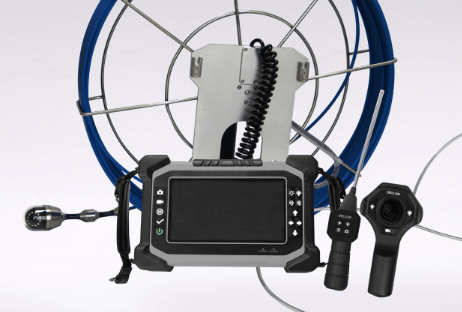Learn All About Inspection Camera Home Depot

Inspection camera home depot are a great tool for home inspectors to have in their arsenal. They can help inspect areas of a property that would be difficult or impossible to get to with a human. This article will teach you all about inspection cameras and how to use them for your home inspection.
1. Introduction
If you’re in the market for an inspection camera home depot, you may be wondering where to start. Home Depot is a great place to look for an inspection camera, as they carry a wide variety of models from different brands. In this blog post, we’ll take a look at some of the different inspection cameras that Home Depot carries, and help you choose the right one for your needs.
Now that you know what to look for in an inspection camera, let’s take a look at some of the different models that Home Depot carries.
The first model we’ll look at is the Ryobi Tek4 4-Volt Inspection Camera. This camera has a resolution of 640×480, and a field of view of 45 degrees. It’s also 4 feet long, making it ideal for reaching into tight spaces. The Ryobi Tek4 is a great choice for general inspection work.
Next, we’ll take a look at the Ridgid SeeSnake micro CA-100 Inspection Camera. This camera has a resolution of 640×480, and a field of view of 50 degrees. It’s also 3.5 feet long, making it a bit more maneuverable than the Ryobi Tek4. The Ridgid SeeSnake is a great choice for inspections that require a bit more maneuverability.
Finally, we’ll take a look at the Milwaukee M12 12-Volt Lithium-Ion Cordless Inspection Camera. This camera has a resolution of 640×480, and a field of view of 60 degrees. It’s also 3.5 feet long, making it just as maneuverable as the Ridgid SeeSnake.
2. What is an inspection camera home depot?
An inspection camera is a small, hand-held video camera used to inspect hard-to-reach areas. The camera is connected to a long, flexible cable that can be fed through small openings and tight spaces.
Inspection cameras are often use by plumbers and mechanics to look for clogs or blockages, and to diagnose other problems. The cameras can also be use to inspect the inside of walls, ceilings, and other hard-to-reach places.
Inspection cameras are available in a variety of sizes and styles, and can be purchase from most hardware or home improvement stores.
3. How can an inspection camera be used?
An inspection camera home depot, also known as a borescope or endoscope, is a small, portable camera that is use to inspect hard-to-reach places. The camera is insert into a small opening, such as a hole in a wall, and allows the user to see inside without having to physically enter the space.
There are a number of different types of inspection cameras, including those that use flexible cables and those that are rigid. The type of camera you need will depend on the task at hand.
Flexible inspection cameras are typically used for inspecting small, tight spaces. The camera is attached to a flexible cable that can be inserted into a variety of spaces. These cameras are often used to inspect pipes and other small openings.
Inspection cameras can be powered by a variety of different power sources, including batteries, AC power, and DC power. The type of power source you need will depend on the application.
Battery-powered inspection cameras are typically use for short, one-time inspections. The camera is attach to a battery pack, which provides power for a limited amount of time. These cameras are often use for inspections that do not require a continuous power source.
AC-powered inspection cameras are typically use for longer inspections. The camera is plug into an AC outlet, which provides power for an extended period of time. These cameras are often use for inspections that require a continuous power source.
DC-powered inspection cameras are typically use for vehicle-based inspections. The camera is plug into a DC power source, such as a car battery, which provides power for an extend period of time. These cameras are often use for inspections
4. What are the benefits of using an inspection camera?
An inspection camera, also known as a borescope, is a small camera that is use to inspect hard-to-reach areas. The camera is attach to a flexible rod or cable, which is insert into the area to be inspected.
Inspection cameras are use in a variety of industries, including automotive, aerospace, and manufacturing. They are also use by plumbers, electricians, and HVAC technicians to inspect pipes, ductwork, and other hard-to-reach areas.
There are many benefits of using an inspection camera. First, they allow you to see into areas that would otherwise be inaccessible. This means that you can identify and repair problems before they become major issues.
Second, inspection cameras can save you time and money. By identifying problems early, you can avoid the need for expensive repairs.
Third, inspection cameras can help you to avoid safety hazards. By inspecting areas before you enter them, you can identify potential hazards and take steps to avoid them.
Fourth, inspection cameras can improve the quality of your work. By providing a clear view of the work area, you can ensure that your work is of the highest quality.
If you are looking for an inspection camera, there are many different types and models available on the market. You can choose from handheld cameras, rigid cameras, and flexible cameras. Handheld inspection cameras are ideal for small jobs and tight spaces. They are easy to maneuver and can be use in a variety of different ways.
Rigid inspection cameras are perfect for larger jobs and more difficult to reach areas. They offer a clear view of the area and are more durable than handheld cameras. Flexible inspection cameras are perfect for hard-to-reach areas. They are easy to maneuver and can be use in a variety of different ways.
5. How to choose the right inspection camera?
If you’re in the market for an inspection camera, there are a few things you’ll want to keep in mind in order to choose the right one for your needs.
1. Determine the type of inspection camera you need.
There are two main types of inspection cameras: rigid and flexible. Rigid cameras are best suit for inspect hard-to-reach areas, while flexible cameras are ideal for inspecting objects that are not easily accessible.
2. Consider the features you need.
When choosing an inspection camera, you’ll want to consider the features you need in order to get the job done. Some features to look for include a color LCD display, LED lighting, and a built-in recorder.
3. Think about the camera’s size.
The size of the camera is important to consider, as you’ll want to make sure it can fit into the area you’re inspecting. If you’re inspecting a small area, such as a drain pipe, you’ll want to choose a smaller camera.
4. Determine the camera’s battery life.
When choosing an inspection camera, you’ll want to consider the battery life. Some cameras can only be use for a few minutes at a time, while others can last for hours.
5. Compare prices.
When choosing an inspection camera, you’ll want to compare prices in order to get the best deal. You can find a variety of inspection cameras online, and you’ll want to compare the features and prices of each one before making your final decision.
6. Conclusion
If you’re in the market for an inspection camera, the Home Depot is a great place to start your search. With a wide selection of both wired and wireless options, there’s sure to be a camera that’s perfect for your needs. And, with helpful features like image stabilization and built-in LED lights, you can be sure that you’ll get clear, sharp images, even in low-light conditions.




